The 1960s was a crazy time. Not just because it gave rise to dirty hippies, free love and the drug culture, but also because it gave rise to some innovative firearms designs. In the wake of World War II and with the Cold War heating up there was a growing demand to introduce more “modern” firearms to give troops in combat an edge over the competition. The decade would see the introduction of novel designs like the American M-16 and the German MP5. But some of the most interesting and innovative designs came from some of the smaller players. One of the best examples is the Polish PM-63 RAK, possibly one of the funkiest firearms I have ever had the opportunity to shoot . . .
The firearm for this (and some other forthcoming reviews) was provided by Battlefield Vegas. Their generous hospitality, seemingly limitless technical expertise, and excellent facilities were instrumental for getting the data and pictures required to make these reviews happen. I regret that it has taken damn near 9 months to actually write these reviews, but hopefully it will be worth the wait.
Back to the gun.
Ever since the beginning of armed conflict one of the sweetest victories has been the ability to edge around the enemy’s defenses and strike their supply line. Typically lightly defended, the baggage train provided the life blood of the front line troops but was an easy target for those able to attack it. Without this vital link the advancing army would eventually run out of supplies and be easy pickings for an enemy attack.
Throughout WWII the United States realized this possible vulnerability and began arming their rear echelon soldiers with firearms that could best be described as “personal defense weapons.” The goal of these guns isn’t necessarily to provide enough firepower to overwhelm an advancing enemy unit, but instead provide some protection for the personnel to be able to hold out for reinforcements or at least slow the enemy’s advance. Since these troops would (theoretically) never be in direct contact more emphasis was placed on making these PDWs compact and easy to control, providing more room for supplies and equipment destined for the front line. PDWs found favor especially with mortar crews and tank units since their light weight allowed them to more easily carry their heavy equipment and stow away out of the way when not in active use. Examples of these firearms include the M1 Carbine and the M3 “Grease Gun.”
After the war a number of countries continued to develop their own take on the PDW for exactly the same reason. With the war in Vietnam heating up and guerrilla tactics the rule of the day, even rear echelon troops were now finding themselves in the thick of combat and needing protection. Poland’s response to the need for such a firearm was the introduction of the PM-63 “Commando’s Handheld Automatic” or RAK.
Chambered in the common 9mm Makarov cartridge, the PM-63 is designed to be as compact as possible while stowed and yet be as controllable as possible when in use. That led to some very interesting design choices that really aren’t seen in many other designs of the time.
What I found most interesting about the gun was the fact that this firearm is a direct blowback open-bolt design, and yet incredibly small. The reason is that the firearm is designed to be carried and kept with the slide forward and the chamber empty — with a full magazine inserted. This slices a good four inches off the overall length of the gun (giving it a much smaller footprint in the holster of a soldier) and also keeps dirt and other contaminants out of the chamber and breech area. When the gun is required all that you need to do is “rack” the slide (which will lock open on a full magazine, a bit of a change for normal closed-bolt handguns) and blast away. The barrel is fixed in place and does not move.
Sliding the slide back and forth, the action is absolutely butter smooth. That could possibly be from the hundreds of thousands of rounds people have but down the pipe, but either way the gun is an absolute dream to handle.
For added control over the firearm there are a couple other features that emerge when required.
A skeleton stock is housed alongside the firearm much like the skeleton stock on the MP5. There’s a butt pad on the end of the stock that folds down for added comfort while shooting and slots into the rear of the PDW when not in use (to keep it from getting in the way of your hands and such). When firing the gun the stock feels a bit wobbly, although I get the feeling the reason for that wobble has more to do with the fact that this is an old gun used at a machine gun rental range and a little bit worn out rather than a knock against the original manufacture of the gun.
Out front the forward hand guard folds down to provide a vertical forward grip. Well ahead of its time in firearms design, this same style of folding forward grip would be used in designs like the H&K MP7 for years to come. The button on the left side of the grip unlocks the grip section and allows it to move, locking once again as soon as the button is released.
Another interesting design feature is the recoil reducing blast shield on the front of the gun. You might notice that there’s a shovel-esque section in front and below the muzzle, and that little piece of metal serves two functions. First, it keeps the shooter’s hand safe by refusing to fire the gun if the hand is too high (and covering the muzzle in any way) and shielding the hand from the resulting super-heated gasses escaping from the muzzle. As nice as that feature may be I get the feeling it was a happy coincidence rather than a deliberate design goal. The real reason for that slanted piece of metal is to serve the same purpose as the slant brake on an AK-47: recoil reduction. The forces of the super-heated gasses coming out of the muzzle act directly on that bit of metal and force it downward, keeping the gun on target after recoil.
Overall, the rest of the firearm’s design is very conventional for the time period. The magazine release is located under the heel of the grip, which is common for European handguns of the time period (and continues to be popular in some modern designs as well). The extractor has made the jump from an internal component to an external (and easily replaced) separate part much like other PDW designs of the age.
The trigger on this gun is a two stage design, which is somewhat surprising on a “spray and pray” design such as this one. The first stage is extremely smooth (if long), followed by a second stage as creepy as Bela Lugosi attending a child’s birthday party. The break is absolutely miserable, not that it is particularly painful but it’s like hearing nails on a chalkboard. Then again, we’re talking about a PDW, so we’re not going to be making any long range precision shots with this thing.
Out on the range the PM-63 is an absolute joy to shoot. The firearm has a built-in rate reducer which momentarily delays the slide from going forward after it reaches full recoil, the result of which is a slower rate of fire at a more controllable rate. Accuracy is acceptable for a PDW: I was able to get an entire magazine into the area of a standard Q target at 10 yards without any problems.
Overall, I’m a fan of the PM-63. The gun is an absolute hoot to shoot, and the design is interesting enough that it might as well be a space laser pistol on some sci-fi movie set. I think it’s really cool, but there’s one catch: there are none to be had. 80,000 were made, and while there are some de-milled parts kits available (at $150 a pop) there aren’t any functioning copies available for sale in the United States. After a couple hours of research I came up empty trying to get even a price range on what one of these would cost.
The Polish PM-63 is a really nifty design from a time long past. Beautifully built and with some interesting engineering inside, the gun is damn near a work of art. If you can find one, that is.
Specifications: Polish PM-63 RAK
Caliber: 9mm Makarov
Action: Full auto, open bolt
Barrel: 6″
Weight: 3.53 pounds
MSRP: $?
Ratings (out of five stars):
Accuracy: * * * *
It’s a PDW. You wouldn’t expect laser-like accuracy, but what accuracy it provides is definitely good enough.
Ergonomics: * * * *
I’m very happy with how it feels. The blueing on the parts is silky smooth, and it just feels right in my hands. That forward grip is a little wobbly, and so is the stock for that matter. Minor niggles overall.
Reliability: * * * * *
Not a single complaint.
Customization:
LOL
Overall: * * * *
It’s a very fun gun, extremely controllable in full auto fire, but ammunition is expensive and parts are damn near nonexistent.

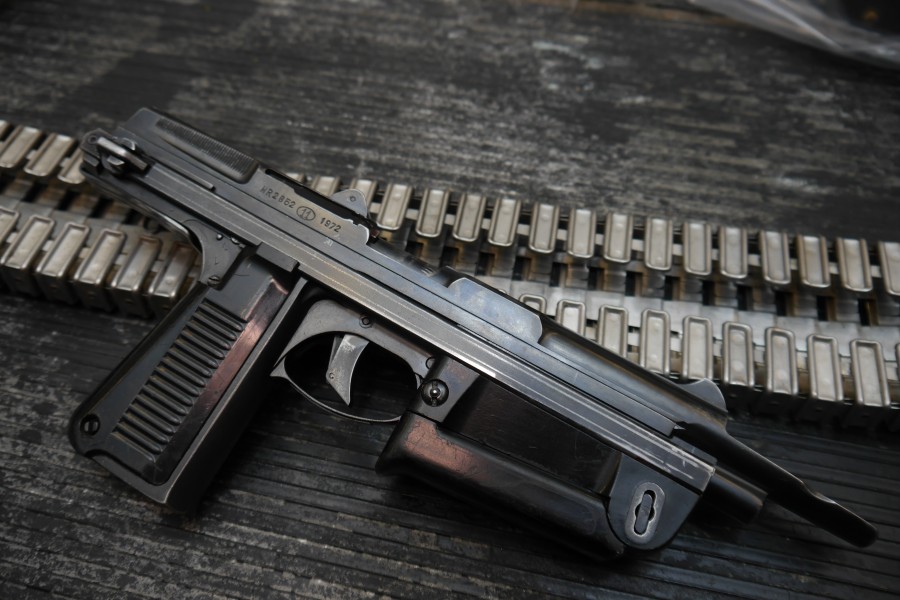
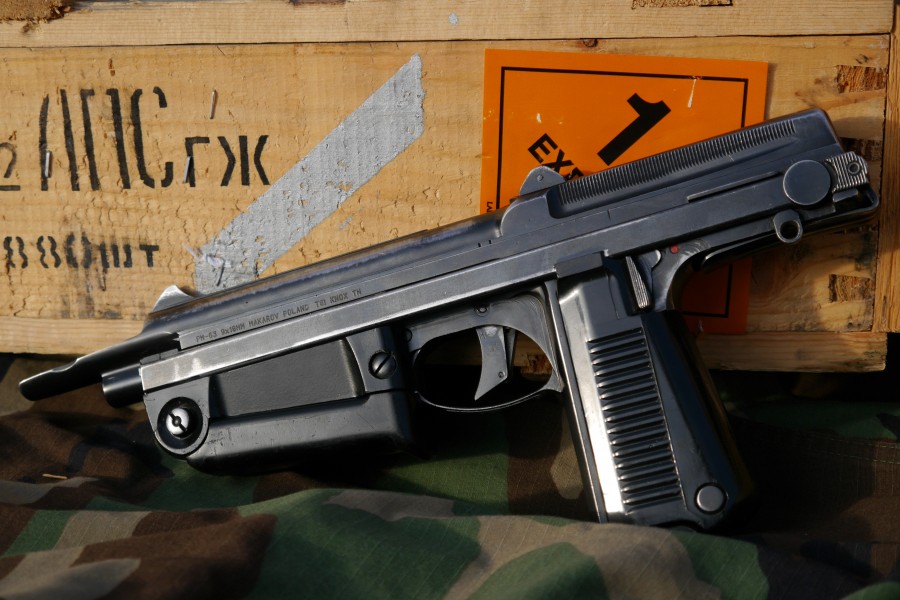


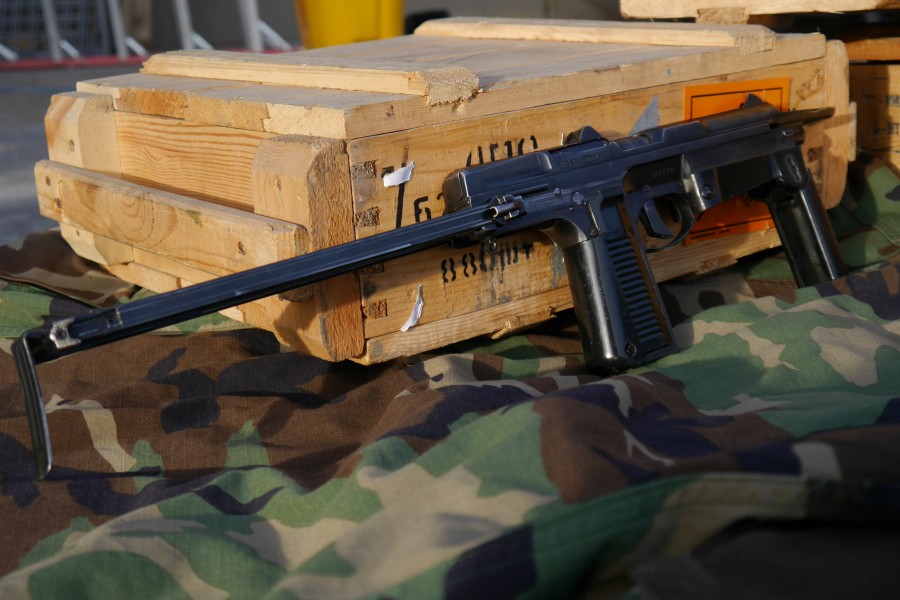
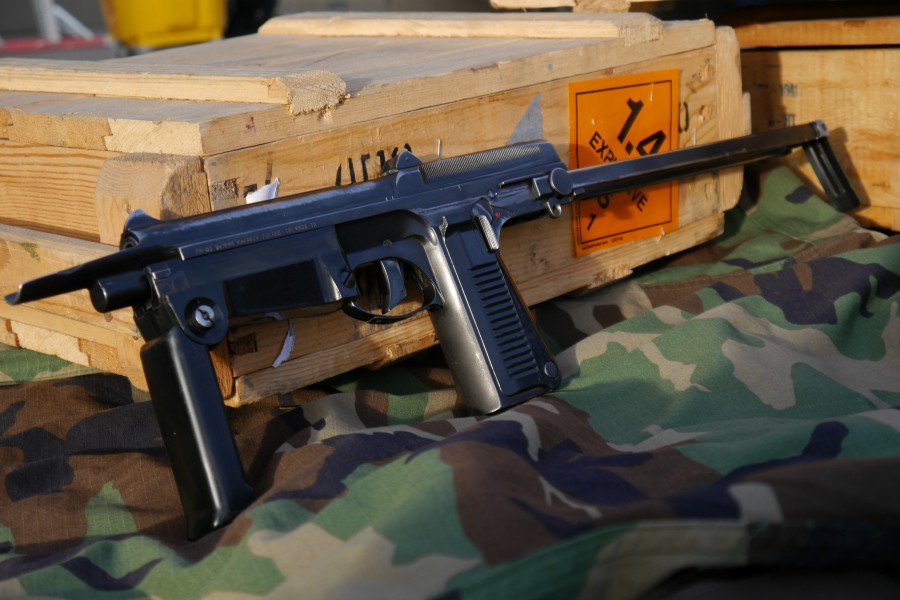
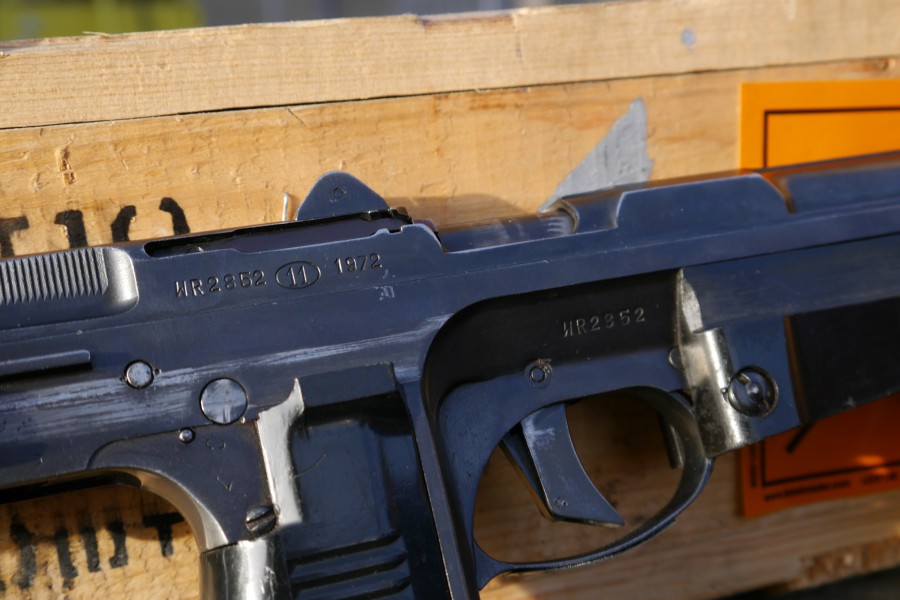
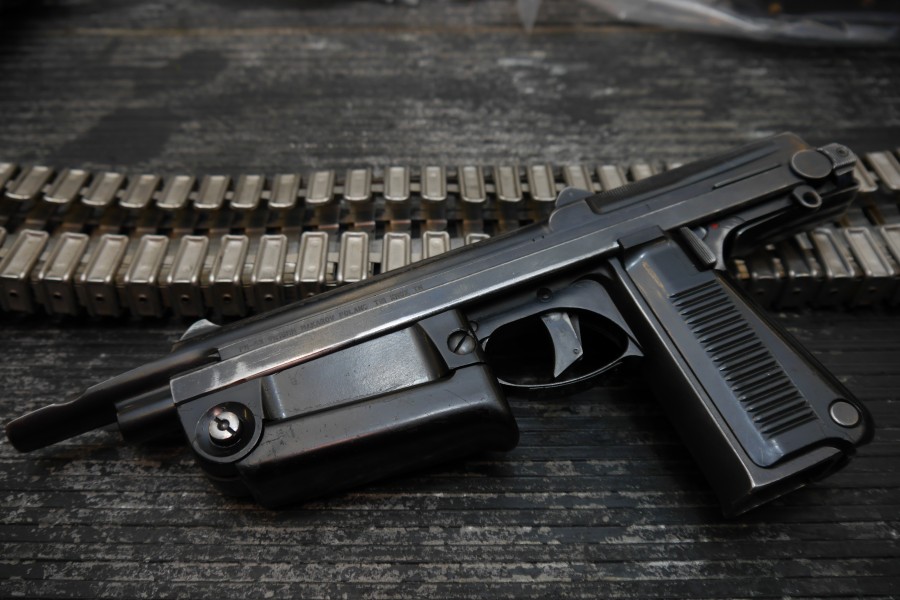



Nice review. I would love to see a video of this gun in action.
https://www.youtube.com/watch?v=-FviDFLttVU
You’re welcome.
Ian McCollum of Forgotten Weapons and InRange TV shooting this exact PM-63 RAK at Battlefield Vegas on the Military Arms Channel:
https://youtu.be/aVuoBwZxcJ4?t=5m9s
COD meets reality.
Coooooool. Never been to Battlefield Vegas, but I’m entirely impressed by what I keep hearing.
Definitely worth checking out the next time you are in Vegas and have some extra cash to burn.
I’ve been fascinated by these ever since I first found out about them. It’s a really clever, unique design, and a perfect representation of its era. Look at that thing. It just screams “Cold War”. The Poles were pretty good weapons designers during that period. Maybe not quite up to the standard set by the Czechs for Eastern Bloc countries, but close.
These pictures are atrocious. Dark metal, on a dark background, and artsy shadows abound.
Yeah, and no sea anemones or chili peppers in the background, either. WTH?!
Barnacles, Joe…
Like, those were soooooooo distracting.
Geoff: Look again at the first pic – there are even some mussels and seaweed in there! LOL!
I actually thought the photos were great! Especially for Nick 😛
Now there’s a back-handed compliment if I’ve ever heard one…
Gonna defend yourself, Nick?
*snicker*
Nah, I think I’m just gunna check into the burn ward… 😉
It’s interesting that this full metal subgun weighs 3.5lbs, but the polymer constructed HK MP7a1 of the same general layout weighs 4lbs.
They’re both straight blowback, but the cartridge that MP7 fires has 60% as much energy at the muzzle. This necessarily translates to a heavier bolt in the latter.
There aren’t any in the US that are transferable, so far as I am aware. I have a semi-auto closed bolt in the works as an SBR (the wait on a stamp is always painful), but currently running as a pistol on a rewelded frame and including a block that prevents an unmodified slide from fitting, the stock from attaching, and the foregrip from screwing on. I’ll have to mill out one of the blocks I welded in place to be able to mount the stock and another for the foregrip, but that won’t be too difficult. Of course, while I wait a buddy’s post-86 sample is fun to play with.
Great little guns, and as soon as someone is making conversion kits for sale that can be finished by the average garage tinkerer, the parts kits will no longer be under $200 each with a handful of 15 and 25 round magazines.
It may be interesting to note that with a simple change of the barrel, you can run either .380acp or 9x18mm. The same magazines and boltface and extractor and all work just fine.
Not much for “open bolt” guns. The innards are exposed to dirt, and whatever else might be flying around. However, they are safer in the fact that you don’t have to worry about leaving a round in the pipe, after you remove the mag
The innards are also way simpler, though. And it looks like for this gun at least, since it’s carried with a closed bolt, you would only worry about the dirt getting in when actually using it.
Not just because it gave rise to dirty hippies, free love and the drug culture,
Hey…. two outta three ain’t bad!
The company that brought in the ppsh 43 pistols has been reengineering these to be closed bolt and atf approved to bring into the country as a pistol
ATF hasn’t approved them for import, as the pistol frames were modified from original frames by milling and welding. Without a complete demil to ATF specs, it’s “once a machinegun, always a machinegun” as a rule. Pioneer won’t be able to import them without complying, which would create quite a few headaches and increase the price remarkably.
That thing is cool…
If I recall correctly, the “shovel” is intended to allow a soldier to cocktail the gun one-handed. This is done by pushing the shovel against a hard object while gripping the pistol grip. Makes sense, because they were intended for vehicle crews who may only have one free hand.
Spoon, and it had two purposes. One, to cock the pistol. Two, and more useful in my opinion, it directs the blast upward to hold the recoil flip down a bit. Without that protrusion on the slide, it’s even more snappy when firing bursts.
PM63s are available in Italy, of course modified as semiauto only and, unfortunately, with the stock welded shut (so much for safety in handling) for some 760 Euros…
I’d rather get a Beretta M12, if anw when they will be available. But it’s a matter of taste…
Andrea from Italy
I’ve barely managed to buy myself one for ~150 US dollars last week, since the first batch was sold out within hours. Produced in 1970 and owned previously by the Polish Police, which is at the moment letting go their old weaponry as the store owner told me. Since there is no selector on this gun and fire mode is dependant on trigger pull(half way pull for semi, pull to the end for autamtic), the semi-auto conversion that is required to make it legal fo civilians in Poland cosists of a metal nut welded underneath the trigger, preventing pulling the trigger till the end. Easily reversible and not interfering with the original mechanism of the gun.
The third purpose of spoon is reloading…with one hand. But the most badass reloading is third metod when you use physics to reload 😉 Watch 1:13 https://m.youtube.com/watch?v=7217kyk8Eoc
Comments are closed.